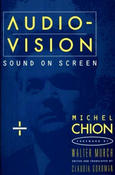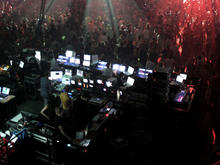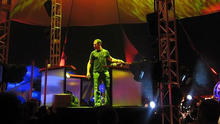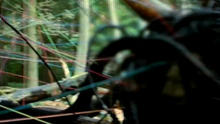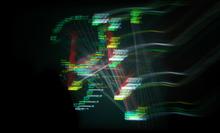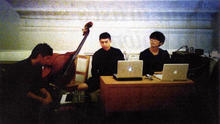Koyaanisqatsi
(1982)[ˈkɔɪɑːnɪsˌkɑːtsiː], also known as Koyaanisqatsi: Life out of Balance, is a 1982 film directed by Godfrey Reggio with music composed by Philip Glass and cinematography by Ron Fricke.
The film consists primarily of slow motion and time-lapse photography of cities and many natural landscapes across the United States. The visual tone poem contains neither dialogue nor a vocalized narration: its tone is set by the juxtaposition of images and music. In the Hopi language, the word Koyaanisqatsi means 'crazy life, life in turmoil, life out of balance, life disintegrating, a state of life that calls for another way of living', and the film implies that modern humanity is living in such a way. The film is the first in the Qatsi trilogy of films: it is followed by Powaqqatsi (1988) and Naqoyqatsi (2002). The trilogy depicts different aspects of the relationship between humans, nature, and technology.
Koyaanisqatsi is the best known of the trilogy and is considered a cult film. However, because of copyright issues, the film was out of print for most of the 1990s.
The opening for The Grid is characterized by slow sustained notes on brass instruments. The music builds in speed and dynamics throughout the piece's 21 minutes. When the piece is at its fastest, it is characterized by a synthesizer playing the piece's bass line ostinato.
The film's soundtrack by Philip Glass was released in 1983, after the release of the film. Even though the amount of music in the film was almost as long as the film itself, the soundtrack release was only 46 minutes long and featured only selections from the film's pieces. In 1998, Glass re-recorded the album through Nonesuch Records with a length of 73 minutes, 21 seconds. The re-recording of the album featured two additional tracks from the film, as well as extended versions of previous tracks from the original album. The album was released as a Philip Glass album titled Koyaanisqatsi, rather than a soundtrack to the film. The music has become so popular that the Philip Glass Ensemble has toured the world, playing the music for Koyaanisqatsi live in front of the movie screen.
The complete original soundtrack recording was released on CD in 2009 on Glass's own label Orange Mountain Music.
Source: Wikipedia
